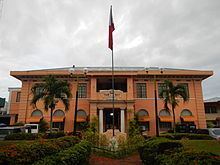Founded December 12, 1848 Time zone PST (UTC+8) Local time Tuesday 7:56 AM | District 4th District Barangays Area 273.4 km² | |
 | ||
Weather 26°C, Wind N at 3 km/h, 79% Humidity Colleges and Universities BEA, Batangas Eastern Colleges Points of interest Laiya, Acuatico Beach Resort, Laiya Coco Grove Resort, Lucky 7 Beach Resort La, Moon Palace Resort | ||
Acuatico beach resort hotel san juan batangas philippines best travel destination
San Juan, officially the Municipality of San Juan (Filipino: Bayan ng San Juan), is a municipality in the province of Batangas in the Calabarzon (Region IV-A) of the Philippines. The population was 108,585 at the 2015 census. In the 2016 electoral roll, it had 59,918 registered voters.
Contents
- Acuatico beach resort hotel san juan batangas philippines best travel destination
- Map of San Juan Batangas Philippines
- Batangas beach camping laiya san juan batangas philippines gopro blackbird blackbird halo
- Geography
- Barangays
- Demographics
- Government
- Official seal
- Economy
- Tourism
- Education
- References
Map of San Juan, Batangas, Philippines
Batangas beach camping laiya san juan batangas philippines gopro blackbird blackbird halo
Geography
San Juan is located at 13°50′N 121°24′E, at the easternmost part of Batangas province. North of San Juan is the neighboring town of Candelaria, with Malaking River defining its geographical boundary. Tayabas Bay lies east and the hills on the eastern portion separate it from the towns of Lobo and Rosario.
According to the Philippine Statistics Authority, the municipality has a land area of 273.40 square kilometres (105.56 sq mi) constituting 7000876000000000000♠8.76% of the 3,119.75-square-kilometre- (1,204.54 sq mi) total area of Batangas.
Barangays
San Juan is politically subdivided into 42 barangays.
Demographics
In the 2015 census, San Juan had a population of 108,585. The population density was 400 inhabitants per square kilometre (1,000/sq mi).
In the 2016 electoral roll, it had 59,918 registered voters.
Government
Local officials were elected during the 2016 National and Local Elections and their term is set to expire on 2019.
Official seal
Economy
San Juan is a first class municipality in the province of Batangas. According to the Local Government Performance Management System 2012 of the Department of Interior and Local Government, the Financial Profile of San Juan:
San Juan is a tourist destination known for its white-sand beaches. The tourism and aquaculture industries provide jobs to the town's people and income to the town economy.
Because of its fertile land, the municipality is one of the top suppliers of agricultural products in the province.
The town has also a coconut wine and pottery industry.
Tourism
Education
Private schools in town include Joseph Marello Institute, founded in 1947, and Batangas Eastern Colleges. San Juan has also a campus of Batangas State University located at Barangay Talahiban II.
Almost all barangays have their own elementary and high schools, where tuition fees are relatively low.
Despite improvements of the town's education system, parents of some students from well-off families send their children to Metro Manila for college.
